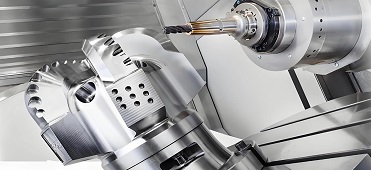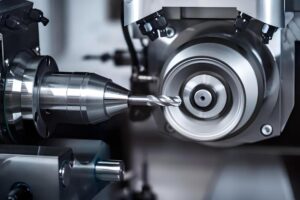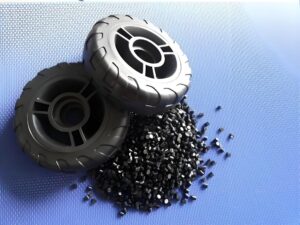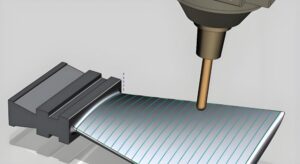CNC machining parts, as a core technology in modern manufacturing, is widely used in various industries such as machinery manufacturing, aerospace, automotive, electronics, and more. It achieves high-precision and high-efficiency machining of parts through computer programs that control the operation of machine tools. Its core advantage lies in converting design drawings into digital instructions (such as G-code) and accurately controlling the machine tool’s motion trajectory, speed, tool selection, and other key parameters through a computer, enabling precise machining of complex parts.
The Working Principle of cnc machined parts
In the process of precision cnc machined parts , digital control technology plays a crucial role. By using CAD/CAM software for programming and generating machining instructions (such as G-code, M-code), the computer converts these instructions into specific actions, precisely controlling various parameters of the machine tool, such as tool path, speed, feed rate, and more.
Modern CNC machine tools support multi-axis linkage (such as 3-axis, 5-axis, or even more axes), making it possible to machine complex surfaces (such as aerospace blades and mold cavities). Thanks to multi-axis linkage technology, CNC machining can meet the high-precision and complex parts machining needs that traditional processing methods cannot fulfill.
Difference between CNC Machining part and Traditional Machining
Compared to traditional manual machining methods, CNC parts machining significantly improves machining accuracy and production efficiency. Traditional machining relies on the worker’s experience and manual operations, resulting in substantial errors, whereas CNC machining precisely controls the machine tool through computer programs, achieving micron-level precision (±0.001mm). This high precision makes CNC precision machining very suitable for producing complex parts needed in fields such as aerospace and precision machinery.
In addition, another significant advantage of CNC parts machining is its high level of automation. Traditional machining methods are generally suitable for small-batch production, but for large-scale, repetitive production, CNC machining shows greater efficiency. By modifying programs, enterprises can quickly adjust the process, reduce manual intervention, and improve production consistency and stability.
Advantages of CNC Parts Machining
- High Precision: CNC machining can achieve micron-level precision, making it particularly suitable for CNC precision machining, ensuring the accuracy of parts machining.
- High Efficiency: CNC machining has achieved a high level of automation, reducing manual operations, supporting 24-hour continuous production, significantly improving production efficiency.
- Complex Machining Capability: Through multi-axis linkage, CNC machine tools can easily machine complex geometries, such as impellers and spiral structures.
- Consistency: Computer program control ensures the consistency of specifications for each part in batch production.
- Wide Material Adaptability: NC machining can handle not only metal materials but also process plastics, ceramics, composites, and other materials, adapting to different machining needs.
With continuous technological advancements, CNC parts machining has become one of the core technologies in modern manufacturing. Whether it is in the production of precision parts or the improvement of production efficiency, NC machining demonstrates formidable advantages. By choosing CNC precision machining, you will achieve higher precision, better efficiency, stronger machining capabilities, and more consistent product quality. Let CNC machining provide unparalleled competitiveness for your manufacturing endeavors.




